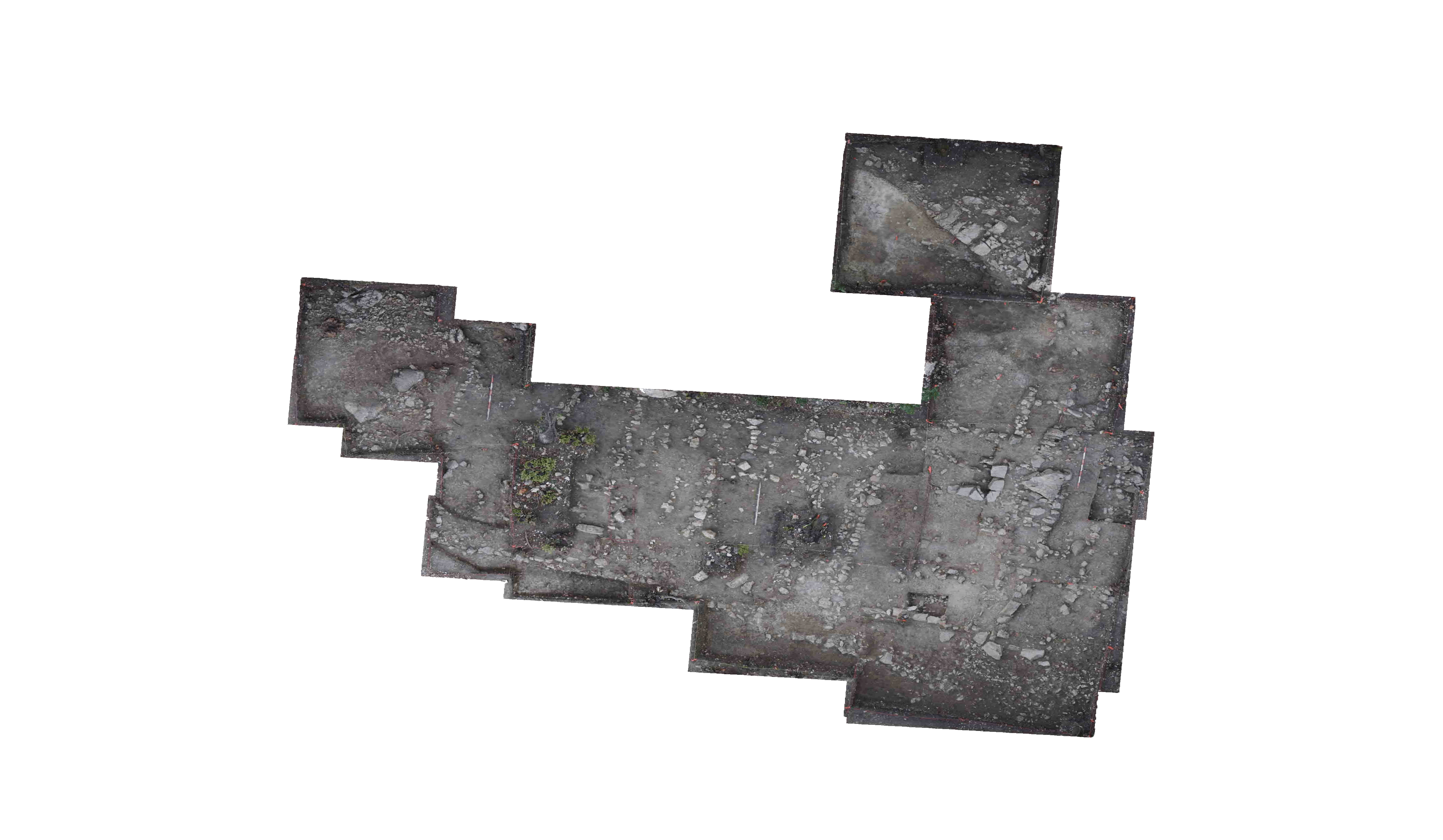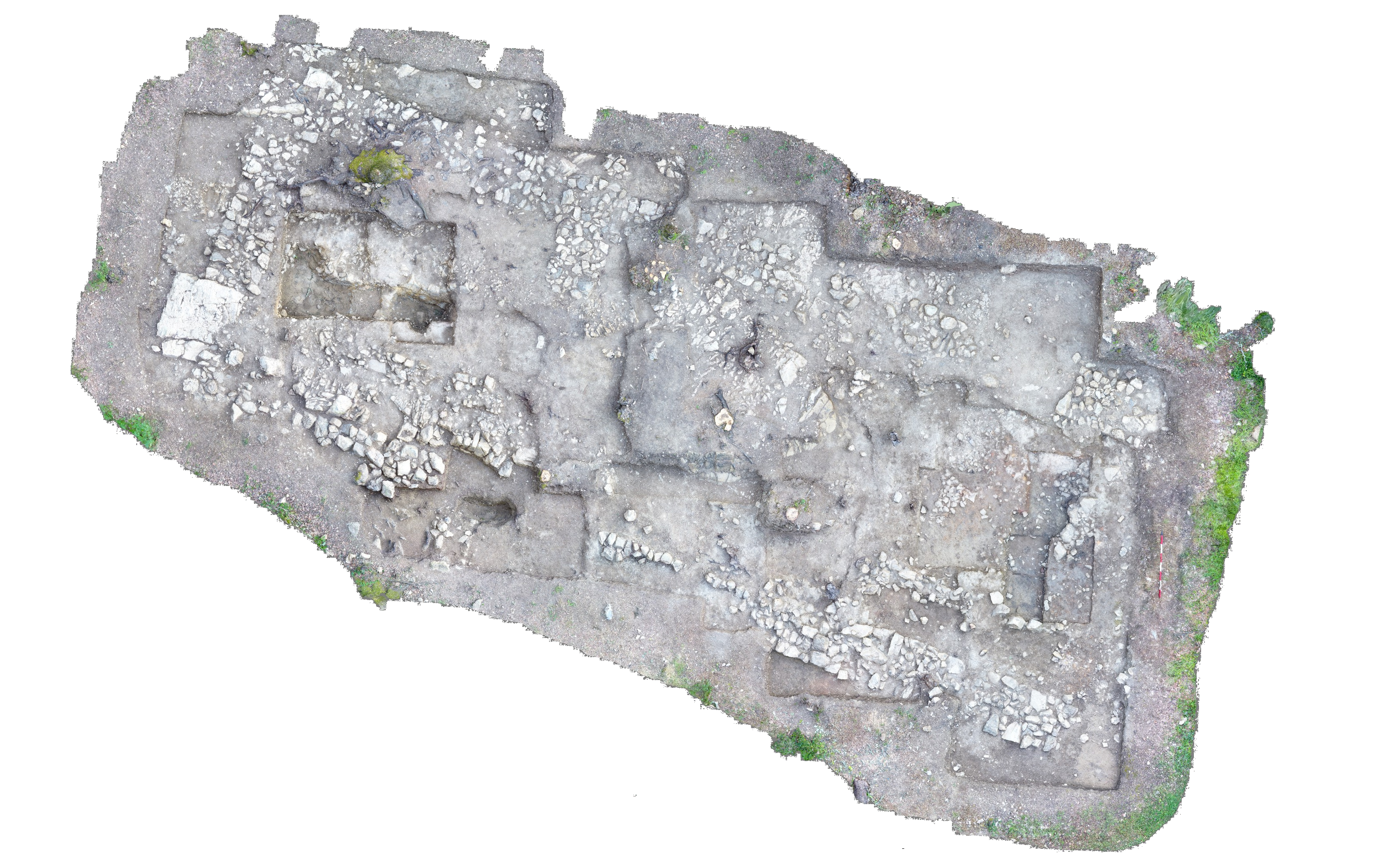Document Content
Friday, July 12 2019
AM
We began the day by closing Locus 22 and opening two new loci, Locus 23 and Locus 24. Closing photos and elevations for Locus 22 were taken.
Closing Elevations: Locus 22
- NE corner (109E/38S): 26.87m A.E.
- SE corner (109E/39.96S): 26.86m A.E.
- SW corner (106.50E/39.29S): 26.88m A.E.
- NW corner (106.50E/38S): 26.91m A.E.
Yesterday, a closing drawing for Locus 22 and an opening drawing for Locus 23 was completed. Artists drew the opening of Locus 24 in their comprehensive drawing of the trench at the start of the season. Opening photos and elevations for Loci 23 and 24 were taken.
Opening Elevations: Locus 23
- 108.75E/39S: 26.85m A.E.
- 109E/39.96S: 26.86m A.E.
- 108.41E/39.48S: 26.82m A.E.
- 108.46E/39.40S: 26.81m A.E.
- 108.60E/39.18S: 26.87m A.E.
Opening Elevations: Locus 23
- NE corner (108.15E/45.90S): 26.24m A.E.
- SE corner (108.15E/47S): 26.28m A.E.
- SW corner (106.50E/47S): 26.22m A.E.
- NW corner (106.50E/45.80S): 26.26m A.E.
Sketch of Loci 21, 22, 23, and 24, with features
Locus 23 is a dark-gray, charcoal-rich deposit in the SE corner of what was Locus 22, adjacent to a preserved portion of EPOC4’s N wall. Locus 22 was closed because a new dense, compacted yellow deposit was exposed over most of the locus, except in the SE corner. We hypothesize that the new, yellow deposit is a natural, geological deposit, and that the dark-gray charcoal-rich deposit of Locus 23 infills a depression in the natural yellow deposit.
Locus 24 is located in the southern part of T90. It is located immediately to the north of EPOC4’s southern wall, in the location of sections conducted in 2018. Locus 24 is equivalent to Locus 18. Locus 24 is a deposit overlying a preserved portion of EPOC4’s floor (Locus 19, excavated in 2018). We are excavating in this area again in order to more fully expose EPOC4’s plaster-rich floor and determine if EPOC4’s southern wall overlays the floor surface, like the northern wall doesn. We also hope to clarify how many courses of stones comprise EPOC4’s S wall; two courses were revealed in 2018.
We began working in both Loci 23 and 24. In Locus 23, soil is dark grayish-brown, claylike, and compacted. It also is heavily mottled - far more so than Locus 22 - with charcoal and plaster inclusions. We are excavating using hand picks and trowels. Soil is hand-sorted in the trench then passed through a 1cm gauge sieve. The first wheelbarrow of sieved soil will be collected as a sample for flotation. We are finding high quantities of pottery, bone, and plaster, but only small quantities of slag and no tile. Additionally, in Locus 23, we found a fragment of burnt bone (Find #102), two plaster fragments preserving reed impressions (Finds #103, 104), and a large charcoal fragment that was collected as charcoal sample #4.
Simultaneously, we began excavating in Locus 24, using hand picks and trowels. The soil is medium-brown and fairly loose. It contains numerous small fragments of plaster, but is not mottled, nor is the concentration of plaster as dense as it is in EPOC4’s floor. In the western part of the locus, we can see that Locus 24 overlies a preserved portion of EPOC4’s floor. However, based on the northern stratigraphic profile from the 2018 excavations, the floor does not seem to extend to the east. Additionally, there are small flakes of charcoal scattered throughout this deposit, although Locus 24 is not nearly as charcoal-rich as some of the deposits excavated in T90. Soil is hand-sorted in the trench, then passed through a 1cm gauge sieve. We are recovering moderate quantities of small fragments of tile and plaster, along with some pottery. We are finding very little bone, but have recovered high quantities of slag. Also, we found a plaster fragment with preserved reed impressions (Find #105), a diagnostic bone fragment (Find #106), and a large slag fragment (Find #107).
In Locus 23, as we excavate down into the deposit, soil is getting more claylike, compacted, and rocky. It is becoming similar in appearance to the compacted yellow deposit exposed over most of what was Locus 22. This suggests that our hypothesis that the new yellow deposit is a natural, geological deposit and that Locus 23 infills a depression is correct. As we reach the bottom of the Locus 23 deposit, the deposit also is becoming rockier. While working in the bottom of Locus 23, we recovered a diagnostic bone fragment (Find #108).
In Locus 24, we seem to be coming down onto a continuation of EPOC4’s floor in the western part of the locus. In the eastern part of the locus, we frequently are finding plaster, but not in a dense enough concentration to be EPOC4’s floor. Furthermore, in the east, the deposit is becoming darker and more charcoal-rich, similar to Locus 20 from 2018. Additionally, we are recovering high quantities of slag from the eastern part of the locus, where we are coming down onto the new, charcoal-rich deposit, but have found far less slag in the western part of the locus, where we are coming down on the plaster-rich EPOC4 floor.
In Locus 23, we seem to have completely removed the charcoal-rich deposit, exposing the dense, compacted yellow deposit and stones beneath. As we approached the interface of the new deposit, we recovered fewer materials. The new deposit appears to lack material culture.
Charcoal Sample #4
- Locus 23
- 108.88E/39.49S
- 26.82m A.E.
Locus 23:
- Plaster: ⅛ bowl
- Pottery: 73 sherds
- Bone: 4 fragments
- Slag: 6 fragments
- Bronze: 1 fragment
Locus 24:
- Tile and plaster: ⅕ bowl
- Pottery: 83 fragments
- Bone: 14 fragments
- Slag: 33 fragments
Special Finds:
Find #102
- Locus 23
- 108.71E/39.70S
- 26.78m A.E.
- Burnt bone
Find #103
- Locus 23
- 108.78E/39.80S
- 26.82m A.E.
- Plaster with reed impressions
Find #104
- Locus 23
- 108.63E/39.67S
- 26.79m A.E.
- Plaster with reed impressions
Find #105
- Locus 24
- 107.28E/45.89S
- 26.30m A.E.
- Plaster with reed impressions
Find #106
- Locus 24
- 107.49E/45.87S
- 26.21m A.E.
- Diagnostic bone
Find #107
- Locus 24
- 107.91E/45.90S
- 26.25m A.E.
- Slag
Find #108
- Locus 23
- 108.64E/39.91S
- 26.82m A.E.
- Diagnostic bone
Find #109
- Locus 24
- 107.24E/45.95S
- 26.21m A.E.
- Slipped pottery
Find #110
- Locus 24
- 107.38E/45.95S
- 26.27m A.E.
- Slag
Supplemental Finds:
Find #137
- Pottery table find
- Locus 24
- 106.50E-108.10E/45.80-47S
- 26.21-26.30m A.E.
- Diagnostic bone
| Descriptive Attribute | Value(s) |
|---|---|
| Document Type | Trench Book Entry |
| Start Page | 139 |
| End Page | 154 |
| Trench Book Entry Date | 2019-07-12 |
| Entry Year | 2019 |
| Entry Type | Excavation Activities |
| Trench Book Title (Paper Book) | KRK XIV |
| Descriptive Attribute | Value(s) |
|---|---|
| Is Part Of Vocabulary: DCMI Metadata Terms (Dublin Core Terms) | Trench Book KRK XIV T90 2019 Vocabulary: Murlo |
Suggested Citation
Anthony Tuck. (2019) "T90 (2019-07-12):139-154; Excavation Activities from Europe/Italy/Poggio Civitate/Tesoro/Tesoro 90/T90 2019". In Murlo. Anthony Tuck (Ed). Released: 2019-09-13. Open Context. <https://opencontext.org/documents/6e75761d-718f-465d-bf50-8edbd6712d62> ARK (Archive): https://n2t.net/ark:/28722/k2nv9rr9v

Copyright License
To the extent to which copyright applies, this content
carries the above license. Follow the link to understand specific permissions
and requirements.
Required Attribution: Citation and reference of URIs (hyperlinks)







